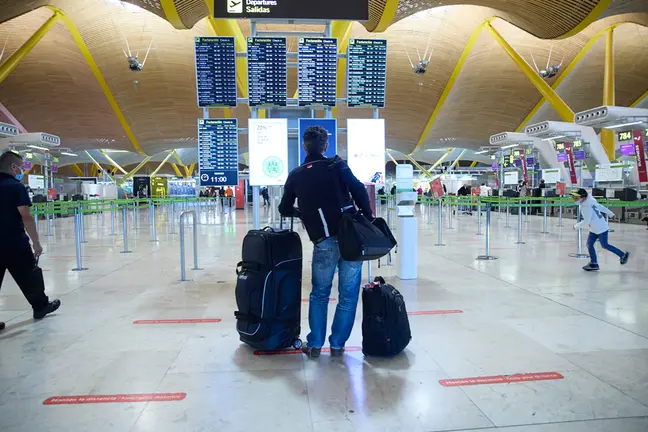The Indian variant of the Covid-19 virus has reached Finland.
According to data released Thursday at a press conference by officials from the Ministry of Social Affairs and Health (STM) and the Finnish Institute of Health and Welfare (THL), in March 3 positive cases of the variant of the coronavirus B.1.617.
India is currently the epicenter of the global pandemic due to the high number of cases, which have overwhelmed the capacity of its health system.
At the moment there are many unknowns about the Indian variant of the virus, scientists are trying to clarify, among other things, if it is more contagious and if it is more deadly for people or more resistant to vaccines.
The Indian is not the main Covid-19 variant spreading in Finland. According to the data provided by the experts, currently one in every five cases detected in the 5.5 million country corresponds to one of the variants of the virus.
As in the rest of Europe, the main one is the British variant, but cases of the South African and Brazilian variants were also detected.
Despite the diagnosis of the first cases of the Indian variant, the latest monitoring report on the epidemic published by the Finnish authorities paints a hopeful picture.
The government highlights that the number of new cases of Covid-19 continues to decline and believes that this "indicates that the epidemic is currently winding down in Finland."
The weekly report stresses that the restrictions and recommendations clearly "have been effective and prevented infections" and estimates that "as spring progresses, vaccines and seasonal variation will begin to contribute to the positive development of the epidemic."
"The fact that people have complied with the recommendations and restrictions in a commendable manner has also helped ease the epidemic," adds the report.
Regional differences
On Tuesday 27 April, the government declared the end of the state of emergency due to the improved situation. However, there are still major differences in the development of the epidemic between hospital districts.
Southern and southwestern Finland (especially Helsinki-Uusimaa, the capital region) are still the worst affected areas.
Between 19 and 25 April, over 1,600 new cases were reported to the communicable diseases register, showing a decrease of around 300 cases from the previous week. The incidence of new cases was 29 per 100,000 inhabitants, while in the previous week it was 35.
The total number of new cases reported in the last two-week period was more than 3,500, which is over 2,200 cases fewer than in the preceding two-week period. The incidence of new cases was 64 per 100,000 inhabitants from 12 to 25 April, while in the preceding two-week period it was 105.
Vaccination progressing
88% of people aged 70 years or older and 57% of people aged 50 years or older have already received their first vaccine dose.
All people in risk groups are expected to have received their first dose by mid-May and all those over 16 who wish to do so by the end of July.
Vaccines are estimated to have reduced the need for hospital care.
On Thursday 29 April there were 125 in hospital care, of which 32 were in intensive care wards.
The number of patients in hospital care was highest before Easter, between 22 March and 4 April. Compared to this, the total number of patients in hospital care has reduced by half, but the rate of decline has slowed down.
So far, Finland has reported 86,613 coronavirus infections and 913 deaths.









